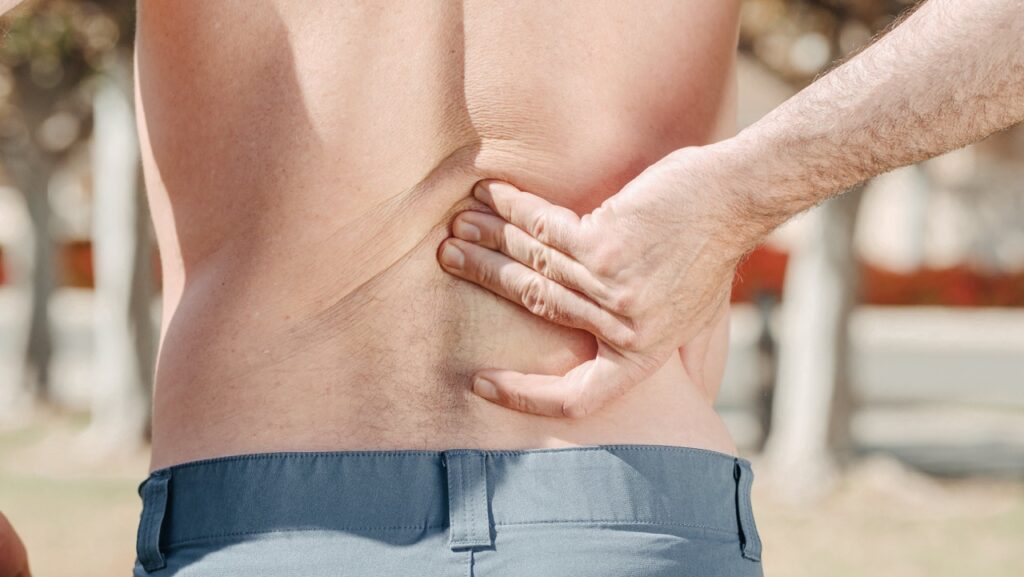Joint Health
Difference Between Joint Pain And Herniated Disc
Are you having joint or back discomfort and are unsure if it is due to joint pain or something more serious, such as a herniated disc? It is critical to grasp the distinction between the two to ensure accurate diagnosis and treatment.
In this article, we will talk about the difference between joint pains and herniated discs, its causes and symptoms, and treatment options.

Understanding Joint Pain
Joint discomfort is a frequent problem that can be caused by a variety of factors, including arthritis, injury, and overuse. It usually affects the places where bones intersect, like the knees, hips, shoulders, and fingers. Joint pain can range from mild to severe, and it may be accompanied by stiffness, edema, or restricted movement.
Joint pain can be caused by a variety of conditions, including osteoarthritis, rheumatoid arthritis, gout, bursitis, and tendinitis. Osteoarthritis is the most prevalent type of joint pain, which arises as the cartilage that cushions the joints deteriorates over time. In contrast, rheumatoid arthritis is an autoimmune illness that produces joint inflammation.

Symptoms of Joint Pains
The symptoms of joint pain:
- Pain
- Soreness
- Stiffness
- Edema
- Difficulty moving the afflicted joint.
The severity of the pain can also vary, with some having minor discomfort while others may suffer from excruciating pain that interferes with their regular activities.

Diagnosing Joint Pain
If you’re having joint pain, you should see a doctor for a proper diagnosis. They will most likely begin with a physical examination and ask about your medical history and symptoms. They may also request imaging studies, such as X-rays, MRIs, or CT scans, to gain a better look at the problematic joint.
Treatment Options for Joint Pain
The treatment for joint pain is determined on the underlying cause and intensity of symptoms. In many cases, conservative treatments such as rest, physical therapy, pain medications, and lifestyle changes can help relieve discomfort and improve joint function. In more extreme cases, the injured joint may require surgical repair or replacement.

Understanding Herniated Discs
A herniated disc, on the other hand, happens when one of the discs that cushion the vertebrae in the spine is injured or ruptured. This might produce discomfort, numbness, or tingling in the affected area, and it may even spread to the arms or legs. In contrast to joint discomfort, herniated discs primarily affect the back or neck.
Herniated discs can result from age-related wear and tear, repetitive movements, lifting heavy objects, or traumatic traumas. The discs in the spine lose suppleness over time, making them more susceptible to harm. When a disc herniates, the gel-like fluid inside the disc leaks out and compresses the surrounding nerves, causing pain and other symptoms.
Symptoms of Herniated Discs
The symptoms of a herniated disc vary according to its location and severity.
Common symptoms:
- Include back or neck discomfort that radiates down the arms or legs.
- Numbness or tingling in the affected area
- Muscular weakness
- Reflex abnormalities.
A herniated disc can produce mild to severe pain, which may exacerbate with particular activities such as bending, lifting, or twisting. Prolonged sitting or standing may increase the pain. It is crucial to note that not all herniated discs generate symptoms, and some people may have a herniated disc yet not feel any pain or discomfort.
Diagnosing Herniated Discs
If you feel you have a herniated disc, you should seek medical assistance for a proper diagnosis. A healthcare expert will usually begin by performing a physical exam and reviewing your medical history and symptoms. They may also request imaging studies, such as X-rays, MRIs, or CT scans, to confirm the diagnosis and assess the degree of the herniation.
Once a herniated disc has been discovered, treatment options will be determined by the severity of the symptoms and their influence on your everyday life. Conservative treatments include rest, physical therapy, pain medicines, and epidural steroid injections can often help relieve pain and encourage healing. If conservative treatments fail to provide relief, the herniated disc may need to be removed or repaired.
Treatment Options for Joint Pain and Herniated Disc
The treatment choices for joint pain and herniated disc differ according to the underlying cause and severity of the symptoms. In both circumstances, conservative treatments are typically the first line of defense. Rest, physical therapy, pain medications, lifestyle changes, and alternative therapies like as acupuncture or chiropractic care are all possible options.
Treatments for joint pain may tackle the underlying cause.
- For example, if the joint discomfort is caused by arthritis, drugs that reduce inflammation and pain may be administered.
- In severe cases, joint replacement surgery may be required to regain mobility and quality of life.
- Conservative therapies for herniated discs can typically relieve symptoms. Physical therapy can help strengthen the muscles around the spine and improve its alignment.
- Discomfort medicines and epidural steroid injections may be utilized to alleviate discomfort and inflammation. Surgery is typically used as a last option when conservative treatments fail or there is severe nerve compression.
Conclusion
To sum up, it is very important to know the difference between joint pain and a herniated disc in order to get the right diagnosis and treatment. Joint pain usually happens where bones meet and can be caused by many things. A ruptured disc, on the other hand, happens when the discs in the spine are damaged or burst. Both illnesses can be painful and make it hard to move around, but they come from different places and are treated in different ways. If your back or joints hurt, you should see a doctor to get a good diagnosis and treatment plan.
Don’t forget that getting help early and getting good care can ease your symptoms and make your life better in general. Do not ignore your pain; instead, get medical help and do what you need to do to get your health and movement back.


